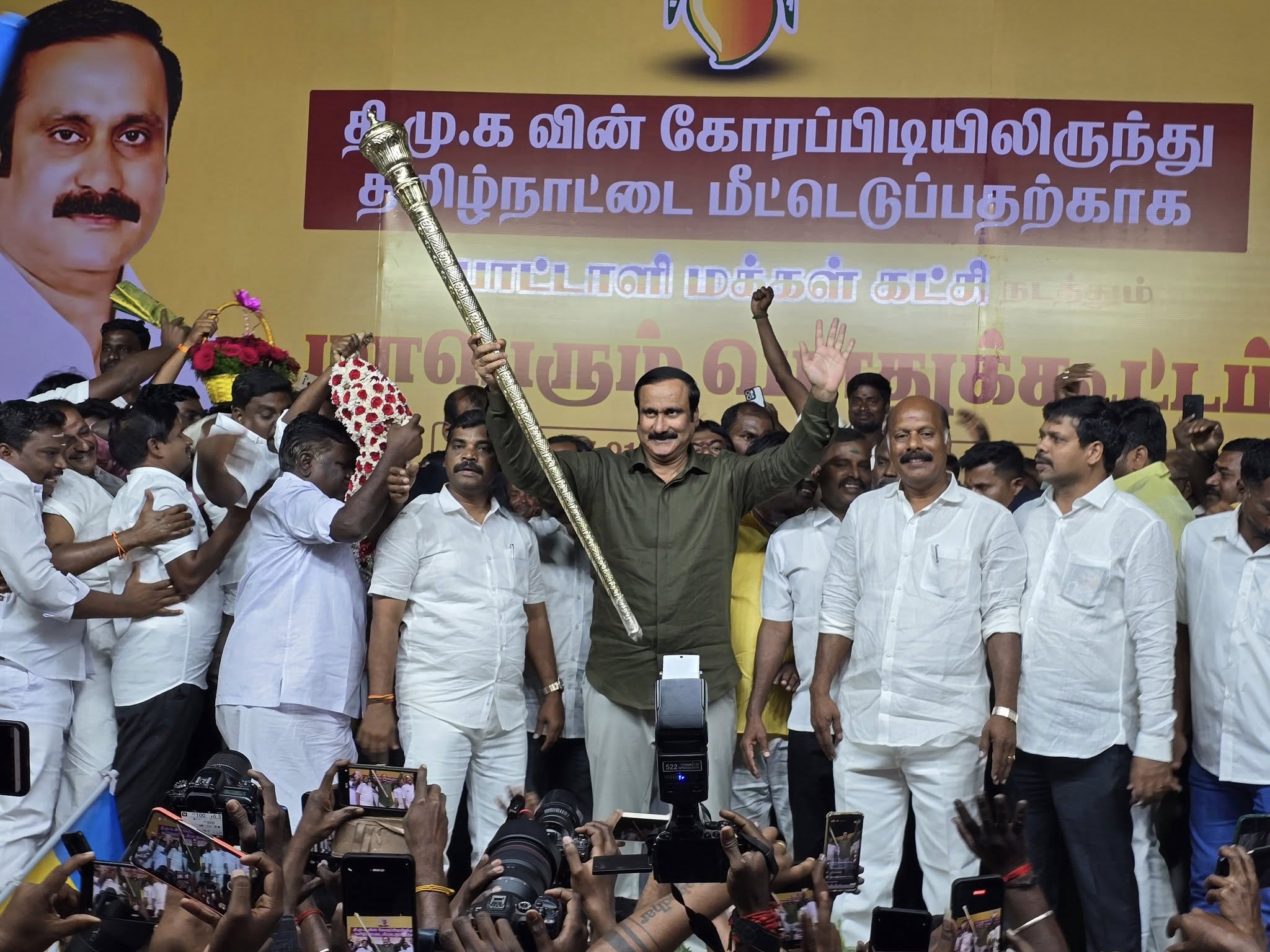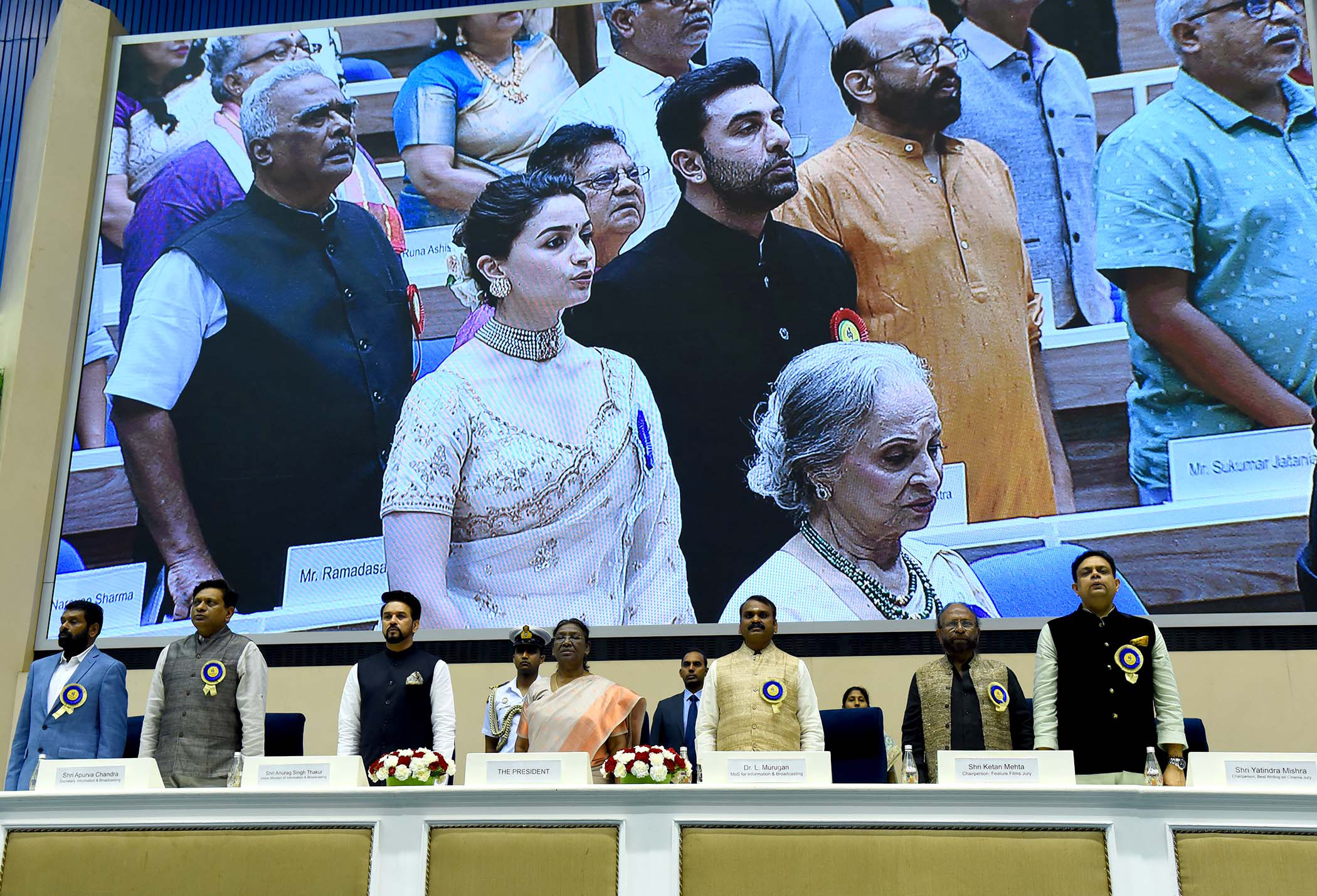
In the kaleidoscope of Indian cinema, where dreams are spun and fantasies come to life, women have consistently stood as the beacon of creativity and resilience. One such woman, Waheeda Rehman, regarded as one of Hindi cinema’s most accomplished actresses, received the Dadasaheb Phalke Award at the 69th National Film Awards ceremony in New Delhi on October 17, 2023. While presenting the award to her, President Droupadi Murmu lauded the octogenarian thespian for having reached the pinnacle of the film industry with her talent and personality. “She has lived her personal life also with dignity, self-confidence and originality. She chose many such films in which her role broke the barriers associated with women. She has set an example that women themselves should take initiative for women empowerment,” Murmu said.
After receiving the prestigious award from the President of India, Waheeda expressed her gratitude to the Bollywood industry upon receiving the prestigious award, acknowledging the collective effort of everyone involved in the world of cinema.
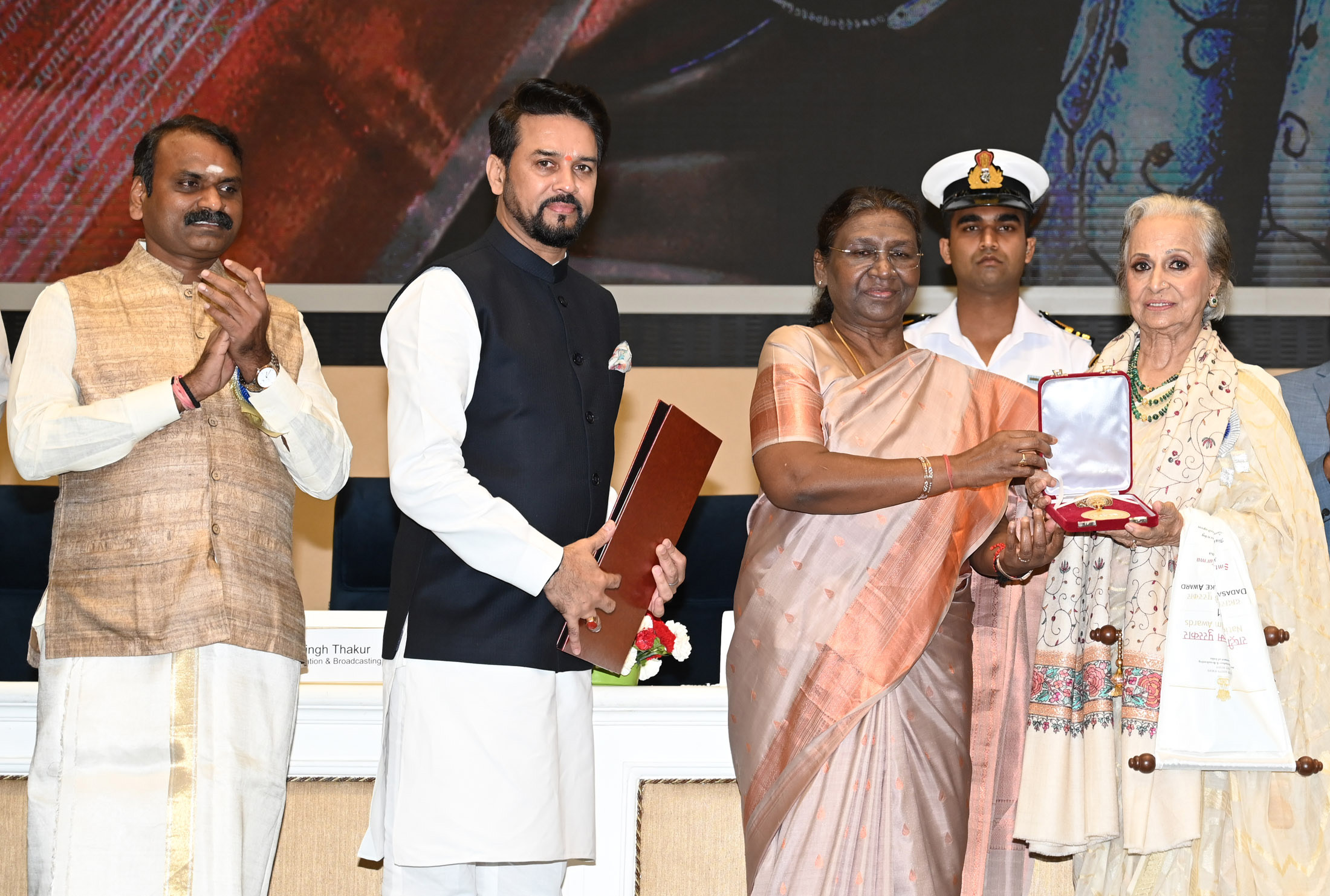
The Dadasaheb Phalke Award, the highest accolade in Indian cinema, has not only celebrated the talent and vision of these remarkable women but also shattered age-old stereotypes. From Devika Rani to Waheeda Rehman, there have been eight women legends who have been conferred this prestigious award named after the father of Indian Cinema, Dadasaheb Phalke.
As we celebrate these remarkable women honoured with the Dadasaheb Phalke Award, we acknowledge their invaluable contributions to Indian cinema. Their enduring influence continues to shape the industry and inspire new talent, ensuring that their legacies live on in the hearts of cinephiles and the annals of Indian cinematic history. These women are the true icons of Indian cinema, and their legacy will shine eternally on the silver screen.
So let’s embark on a journey into the lives of these cinematic trailblazers who have rewritten the script of Indian filmmaking.
Devika Rani: The First Lady of Indian Cinema
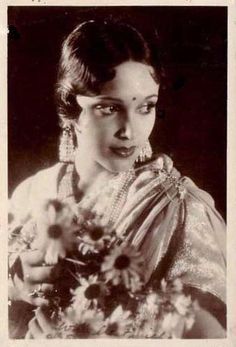
Affectionately known as the ‘First Lady of Indian Cinema’, Devika Rani was also the very first recipient of the Dadasaheb Phalke Award in 1969. She stepped onto the cinematic stage with her debut in the groundbreaking Karma (1933), a masterpiece that marked India’s maiden voyage into English-language cinema. This film not only introduced English to Indian audiences but also set the screen ablaze with the nation’s first on-screen kiss, etching its place in the annals of cinematic history. Yet, Devika Rani’s impact went beyond her acting skills; she was a maven behind the scenes, laying the foundation for Bombay Talkies, India’s maiden public limited film company, in 1934. She was both an actress and a pioneering filmmaker who played a pivotal role in shaping the early Indian film industry.
Devika Rani was born into a privileged, Anglicized Indian family and sent to an English boarding school at the age of nine, where she spent her formative years. In 1928, she crossed paths with Himanshu Rai, an Indian film producer, and the two were married the following year. Devika Rani played an instrumental role in costume design and art direction for Rai’s groundbreaking silent film, A Throw of Dice (1929). Subsequently, they embarked on a journey to Germany, where they received formal training in the art of filmmaking at UFA Studios in Berlin.
Rai then cast himself as the hero and Devika Rani as the heroine in their project, Karma, a bilingual film made in English and Hindi. This film premiered in England in 1933 and stirred considerable interest due to a daring kissing scene featuring the real-life couple, but it met with poor reception in India. In 1934, the couple returned to India, where Himanshu Rai founded Bombay Talkies, a production studio, in collaboration with others. Over the next 5-6 years, the studio produced several successful films, with Devika Rani often taking on lead roles. Her on-screen partnership with Ashok Kumar gained popularity in India.
After the untimely demise of Himanshu Rai in 1940, Devika Rani assumed control of the studio and continued to produce films in collaboration with her late husband’s associates, namely Sashadhar Mukherjee and Ashok Kumar. In 1945, she bid farewell to her film career, married the Russian painter Svetoslav Roerich, and relocated to his estate on the outskirts of Bangalore. Devika Rani was known for her unconventional persona, which mirrored her non-traditional film roles.
Sulochana: The Enchantress of Silent Dreams
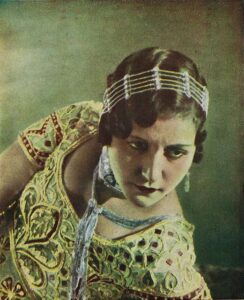
Ruby Myers, whose screen name was Sulochana, was a silent-era enchantress, who posthumously received the Dadasaheb Phalke Award in 1973. She had a Baghdadi Jewish heritage. She was one of the early Eurasian female stars in Indian Cinema. Initially a telephone operator, she was approached by Mohan Bhavnani from Kohinoor Film Company to join the film industry. Despite initial reluctance due to the profession’s dubious reputation for women, she eventually agreed, even though she had no acting experience. Sulochana rose to stardom under Bhavnani’s guidance at Kohinoor and later became the highest-paid actress in the country when she moved to the Imperial Film Company. During the silent film era, she reached the peak of her fame in romantic films directed by R.S. Chaudhari, including Madhuri (1928), Anarkali (1928), and Indira B.A. (1929).
Her magnetic presence and captivating performances in films such as Wild Cat of Bombay transcended language and showcased the sheer power of visual storytelling. As one of the highest-paid actresses of her era, Sulochana was the very first ‘sex symbol’ of Indian cinema. She earned a substantial monthly salary of Rs 5000, owned a stylish Chevrolet car from 1935, and had D. Billimoria, one of the prominent heroes of the silent era, as her exclusive on-screen partner from 1933 to 1939. Their on-screen chemistry made them an immensely popular duo, with his John Barrymore-like charisma complementing her role as the Oriental ‘Queen of Romance.’ Her films, including Cinema Queen and Madhuri, became timeless classics that continue to mesmerize audiences. Her award stands as a poignant tribute to the enchantment she brought to the cinematic world.
Kanan Devi: The Songbird of Bengal
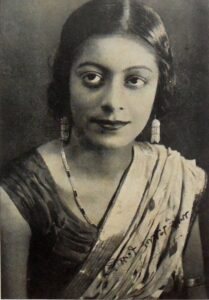
Often hailed as “the first lady of Bengali cinema,” Kanan Devi marked her debut in silent films during the 1920s. She not only graced the screen with her acting but also lent her mellifluous voice to songs penned by Rabindranath Tagore. Her prowess extended to production through her film company, Shrimati Pictures. In 1976, Kanan Devi was honoured with the Dadasaheb Phalke Award for her monumental contributions to Indian cinema. Her legacy lives on as she worked with luminaries like Kundal Lal Saigal, P.C. Barua, and Ashok Kumar, etching her name in the golden annals of Indian film history.
In her autobiography, titled “Sabaray Ami Nami,” Kanan revealed that the individuals she regarded as her parents were Ratan Chandra Das and Rajobala, who lived together. Following the passing of her adoptive father, Ratan Chandra Das, young Kanan and Rajobala found themselves on their own. Her life story is a true rags-to-riches narrative. A well-wisher named Tulsi Banerji, affectionately known as Kaka Babu, introduced ten-year-old Kanan to the world of cinema at Madan Theatres/Jyoti Studios. Her first roles included a small part in Jaidev (1926) and Shankaracharya (1927). During this period, she was known as Kanan Bala. She appeared in at least five films produced by Madan Theatres between 1926 and 1932, including Rishir Prem (1931), Jorebarat (1931), and Vishnu Maya (1932), and even played male lead roles in the last two.
Kanan successfully transitioned from silent films to talkies and gained recognition for her roles in films such as Jorebarat (1931), Manomoyee Girls School, Khooni Kaun” and Maa (1934). Her association with New Theatres, owned by Biren Sircar, propelled her to stardom as both an actress and singer, with her films drawing packed audiences. Her immense popularity required her to have constant security due to her devoted fan following.
During her tenure with New Theatres in Calcutta from 1937, Kanan played the leading role in Debaki Bose’s Mukti (1937), a performance considered one of her finest. This role established her as the studio’s top star. In addition to Mukti, she appeared in films like Vidyapati, Saathi (1938), Street Singer (1938), and Sapera. It was during this phase that she adopted the name Kanan Devi.
Durga Khote: The Lady Who Shaped Indian Cinema

A pioneer among Indian actresses, Durga Khote embarked on a prolific career that spanned over five decades, gracing over 200 films and numerous theatre productions. She received the Dadasaheb Phalke Award in 1983 for her groundbreaking roles in Hindi and Marathi cinema and her role in the first Marathi-language talkie, Ayodhyecha Raja (1932). Setting up production companies, Fact Films and Durga Khote Productions, she also ventured into producing short films and documentaries. India Today, in a millennium issue, recognized her as one of “100 People Who Shaped India,” lauding her as a trailblazer who broke social taboos by entering the film industry from a respectable family. For any Hindi movie fan, it is impossible to forget her role of Jodhabai in one of the greatest Bollywood blockbusters, Mughal-E-Azam (1960).
As a young college-going teenager, Durga Khote entered into marriage with the Khote family, settling down with her husband. However, by the age of 26, she found herself a widowed mother of two young sons, Bakul and Harin. To support her family, she ventured into the film industry, an unconventional move at the time. Her decision was groundbreaking, as she came from a traditional background, and the film industry was often associated with less respectable content. Moreover, in that era, many female roles were portrayed by male actors. Durga Khote made her debut with a minor role in the obscure 1931 silent film Farebi Jaal, produced by the Prabhat Film Company, followed by Maya Machindra (1932). Her talent quickly earned her the lead role in the 1932 bilingual film Ayodhyecha Raja, produced by Prabhat, which was the first-ever Marathi talkie and a massive success. In this film, she portrayed the character of Rani Taramati.
Durga Khote also set a pioneering trend by breaking away from the prevailing “studio system,” which involved exclusive contracts with studios for a monthly salary. She became one of the first “freelance” artists of her time, collaborating occasionally with New Theatres, East India Film Co. in Calcutta, and Prakash Pictures. One of her most memorable roles came in 1936 when she portrayed Saudamini in “Amar Jyoti.” Her on-screen characters often mirrored her regal personality, and she had a commanding presence even alongside legendary actors like Chandra Mohan, Sohrab Modi, and Prithviraj Kapoor.
Lata Mangeshkar: The Nightingale of India
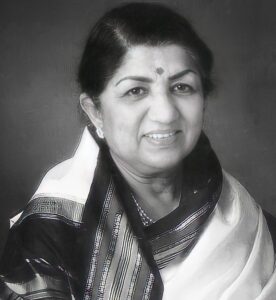
Lata Mangeshkar, the mellifluous voice that serenaded India for over seven decades, was honoured with the Dadasaheb Phalke Award in 1989. Fondly known as the “Nightingale of India,” her songs have been the heartbeat of countless movies, each note infused with emotions that touch the soul. Her immense contributions to Indian music earned her the prestigious Bharat Ratna in 2001 and the French honour, Officer of the National Order of the Legion of Honour, in 2007.
Lata’s illustrious career saw her record songs in more than thirty-six Indian languages and a few foreign languages, with a primary focus on Hindi, Bengali, and Marathi. She held a spot in the Guinness World Records as the most-recorded artist in history, a title later taken over by her sister, Asha Bhosle.
Her debut in the Hindi music scene was marked by the song Mata Ek Sapoot Ki Duniya Badal De Tu, featured in the Marathi film Gajaabhaau (1943). During a time when the Bollywood industry was still finding its footing, Mangeshkar had to begin her journey with acting, which she was not particularly fond of due to the discomfort caused by the lights and constant direction. It is believed that she initially emulated the acclaimed singer Noor Jehan, but she eventually developed her unique singing style.
Lata introduced a distinctive singing style to Indian film music that bridged the gap between ‘modern’ and ‘traditional’ female protagonists, departing from the conventional mehfil-style performances. Her soprano range voice, although not particularly powerful, possessed enough depth to give shape to the melody of Indian film songs. One of her early career-defining hits was the song Aayega Aanewaala from the movie Mahal (1949), composed by Khemchand Prakash and lip-synced on screen by the actress Madhubala. This song was a pivotal moment in her career and played a significant role in establishing the importance of playback singers in the Indian music industry.
Asha Bhosle: The Versatile Songstress
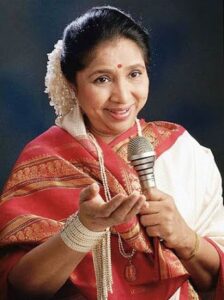
Lata Mangeshkar’s sibling Asha Bhosle, the epitome of vocal versatility, was awarded the Dadasaheb Phalke Award in 2000. Her voice painted the town with every shade of emotion, from haunting melodies to foot-tapping beats. Over her eight-decade-long career, she recorded songs in numerous Indian languages and received accolades including two National Film Awards, four Bengal Film Journalists’ Association awards, and a record seven Filmfare Awards for Best Female Playback Singer. In 2008, she was honoured with the Padma Vibhushan, India’s second-highest civilian honour.
Asha is celebrated for her soprano voice range and versatility. Her extensive body of work encompasses film music, pop, ghazals, bhajans, traditional Indian classical music, folk songs, qawwalis, and Rabindra Sangeet. Besides Hindi, she has sung in over 20 Indian and foreign languages. Her musical journey began with the Marathi film Majha Bal (1943), where she sang her first film song, Chala Chala Nav Bala, composed by Datta Davjekar. Asha Bhosle’s entry into Hindi cinema happened in 1948 with the song Saawan Aaya in Hansraj Behl’s Chunariya. Her first solo Hindi film song was featured in Raat Ki Raani (1949). She gained recognition with her rendition of Sangdil (1952), composed by Sajjad Hussain. This led to an opportunity from film director Bimal Roy, who offered her a song in Parineeta (1953). Her collaboration with Mohammed Rafi on Nanhe Munne Bachche in Raj Kapoor’s “Boot Polish” (1954) became immensely popular. In 1966, Asha Bhosle’s duets in Rahul Dev Burman’s soundtrack for Teesri Manzil received widespread acclaim. Initially hesitant about the Westernized tune of the dance number Aaja Aaja, she accepted the challenge, persevered through ten days of rehearsals, and delivered a remarkable performance. Songs like Aaja Aaja, O Haseena Zulfonwali, and O Mere Sona Re from the movie became major hits. However, the ghazals from Muzaffar Ali’s Umraon Jaan, took her already acclaimed versatility to a new level.
Asha Parekh: The Jubilee Girl of Hindi Cinema
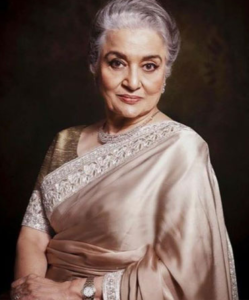
As an actress, film director, and producer, Asha Parekh is celebrated as one of Hindi cinema’s finest actresses. She made her acting debut in 1952 and went on to become one of Hindi cinema’s most enduring stars. Her contributions to the field of cinema were recognized with the Padma Shri in 1992 and the Dadasaheb Phalke Award in 2020.
Asha Parekh embarked on her career as a child artist using the screen name Baby Asha Parekh. Renowned film director Bimal Roy noticed her dancing talent at a stage function and cast her when she was just ten years old in Maa (1952), followed by Baap Beti (1954). The disappointment of the latter film’s failure led her to temporarily withdraw from acting, even though she took on a few more child roles before resuming her education. At the age of 16, Asha Parekh decided to give acting another try and make her debut as a leading lady. Initially rejected for Vijay Bhatt’s Goonj Uthi Shehnai (1959) in favour of actress Ameeta, who was deemed more suitable by the filmmaker, her fortunes changed just eight days later. Film producer Subodh Mukherjee and writer-director Nasir Hussain cast her as the heroine in Dil Deke Dekho (1959), opposite Shammi Kapoor, which catapulted her to stardom.
Asha Parekh was initially recognized for her roles as a glamour girl, dancer, and tomboy in most of her films. However, director Raj Khosla reshaped her image by casting her in tragic roles in three of her favourite films: Do Badan (1966), Chirag (1969), which earned her a Filmfare Award Best Actress nomination, and Main Tulsi Tere Aangan Ki (1978), which also secured her a Filmfare Award nomination for Best Supporting Actress. Director Shakti Samanta further broadened her horizons with more dramatic roles in two of her cherished films, Pagla Kahin Ka (1970) and Kati Patang (1970). Her role in the latter film earned her the prestigious Filmfare Award for Best Actress.
Waheeda Rehman: The Icon of Grace and Talent
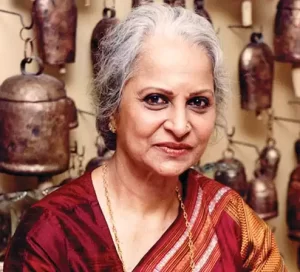
Waheeda Rehman’s career, spanning over five decades, was marked by collaborations with legendary filmmaker Guru Dutt and a string of unforgettable performances. She had aspired to become a doctor, but family circumstances, emotional and financial, coupled with her mother’s illness, led her to abandon her dream. To support her family, she turned to the film industry, capitalizing on her dancing talents. Her film journey began with a Tamil film called Alibabavum 40 Thirudargalum, where she initially appeared as a dancer. However, her debut in the Telugu film Rojulu Marayi (1955) preceded this, showcasing her dance skills. In the same year, she played the lead role opposite NT Rama Rao in the film Jayasimha. Later, her cameo appearance in Alibabavum 40 Thirudargalum was released in 1956. Notably, this film, based on the folktale of Ali Baba and the Forty Thieves, was the first Tamil film to be colourized. In the mid-1950s, she forged a successful working relationship with Dev Anand, leading to several hit films, including Solva Saal (1958). Her performance in this film proved her versatility in both intense and light-hearted scenes. Waheeda expanded her horizons into Bengali cinema with Satyajit Ray’s Abhijan (1962) and continued to take on diverse roles in Hindi films. These roles included a murder suspect in Baat Ek Raat Ki (1962), a woman caught in a sibling feud in Rakhi (1962), and an infertile character in Ek Dil Sau Afsane (1963). As a leading lady, she appeared alongside renowned actors in Hindi cinema, such as Sunil Dutt in Mujhe Jeene Do (1962), Nirupa Roy in Kaun Apna Kaun Paraya (1963), and Biswajit in films like Kohraa (1964), Majboor (1964), and the psychological thriller Bees Saal Baad (1962), which became the highest-grossing Hindi film of 1962. By the end of 1964, Waheeda had become the third-highest-paid actress in Hindi films for the period from 1959 to 1964.
These filmi women, through their talents, dedication, and passion for their craft, have paved the way for countless others in the Indian film industry. They have not only created a lasting legacy but also broken barriers, proving that gender is no obstacle to achieving greatness in the world of cinema. The Dadasaheb Phalke Award has recognized their exceptional contributions, inspiring generations of filmmakers and artists to follow in their illustrious footsteps.





